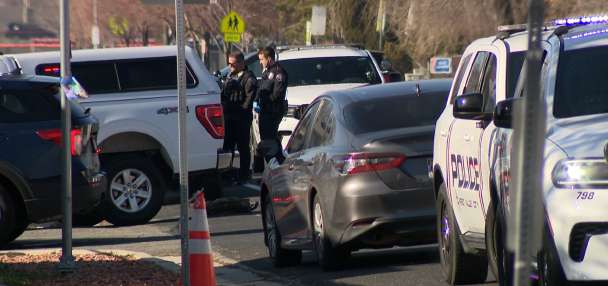Estimated read time: 2-3 minutes
This archived news story is available only for your personal, non-commercial use. Information in the story may be outdated or superseded by additional information. Reading or replaying the story in its archived form does not constitute a republication of the story.
SALT LAKE CITY — Salt Lake City leaders on Thursday announced a new temporary, emergency overnight shelter for people experiencing homelessness — and it's in a neighborhood that once vehemently protested hosting a homeless center.
The new emergency shelter will be set up in the old Deseret Industries building in Sugar House, 2234 S. Highland Drive, Salt Lake City Mayor Erin Mendenhall and members of the Salt Lake City Council announced in a press conference on the steps of the Salt Lake City-County Building late Thursday.
The announcement comes after recent protests over the late-November closure of the Road Home's downtown homeless shelter, meant to cap off Utah's shift to a new homeless services delivery system with three new resource centers in Salt Lake City and South Salt Lake.
Some nights, some of those centers have reached capacity, but providers also report difficulty coordinating to fill all the beds on other nights. Some people experiencing homelessness have also refused to leave the downtown area, though they are given an option to sleep on overflow mats at the St. Vincent de Paul Dining Hall, or wait in a chair at the Catholic Community Services' Weigand Center for services.
Concerns of the capacity of the new centers and whether their combined 700 beds would be enough to replace the downtown shelter have long lingered, but recently hit a boiling point as protesters demonstrating on Washington Square clashed with police the day before Mendenhall's inauguration ceremony.
As Mendenhall began her administration this month, she pledged to take swift action on homelessness concerns.
Mendenhall long ago, as a councilwoman, expressed the same concerns about the Road Home closing that the protesters are now demonstrating. But since the decision to close the downtown shelter was made at the state level, Mendenhall told KSL the days heading into her entering office she aimed to explore more "emergency overflow opportunities" with city, county and state partners.
Specifically, Mendenhall said she was seeking other ways to address shelter overflow, other than referring clients to wait in chairs in the warming center rather than being given a mat to sleep on.
"Because I don't doubt in the next two months as blizzards come through ... that we will be short on beds in the homeless resource centers and people would be turned away," Mendenhall told KSL at the time. "I don't believe that sitting up in a chair sleeping at the Weigand Center is the best humane option that we're offering. We need to actually provide opportunities for people to lay down and sleep."










